When it first released two years ago, Destiny was far from a perfect game. Doubling down on their commitment to make the franchise last the next decade however, Bungie has continued refining and polishing. As a result, Rise of Iron is nothing less than the culmination of all those hard-earned lessons. But, with Destiny 2 taking the vast majority of the developer’s resources, it unfortunately comes as no surprise that the expansion is just as short as it is sweet.
If there is one disappointing aspect to Rise of Iron, it’s how little meat there is in the main campaign itself. Long ago, the original guardians, called the Iron Lords, found a nano-virus called SIVA. They mistakenly thought they could control and use it, but ultimately locked it away, sacrificing themselves in the process. The Fallen have now unearthed SIVA, and have started using it to augment themselves and their machines.
These augmented Fallen are the new ‘Splicer’ enemies. Though sporting a more twisted, mechanical look than their counterparts, Splicers operate the same as the Fallen we’ve been fighting for years. Occasionally, one will launch out a last, high-damage projectile upon death, similar to Shriekers, but they don’t pose much more of a new mechanical challenge other than that. This is overshadowed however, as the real issue is that the central Rise of Iron quest line, dealing with the return of SIVA, is a mere five quick missions.
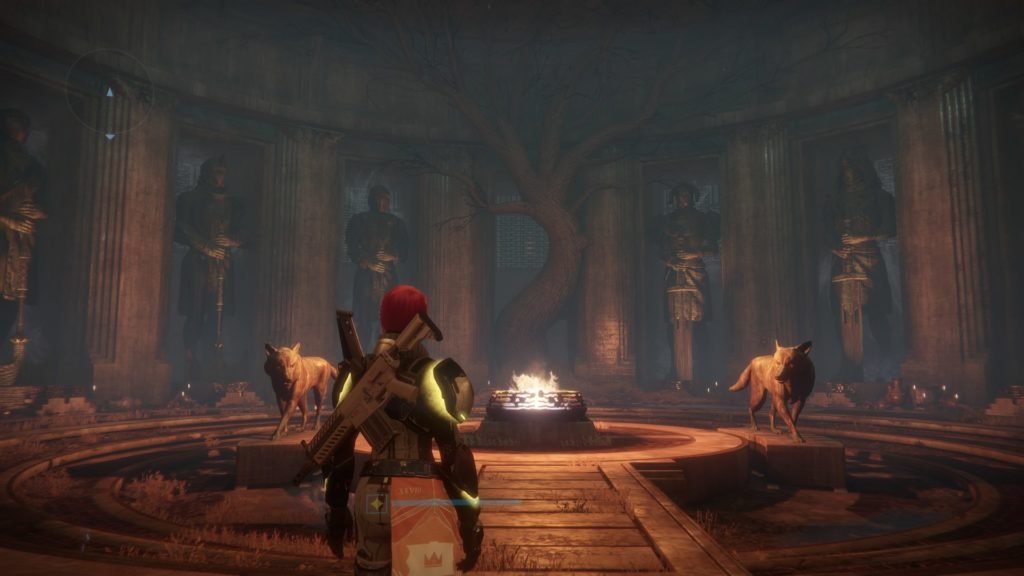
Just as you get back into the groove of Destiny’s still unbelievably enjoyable shooting and looting, Lord Saladin suddenly commands you to “finish this,” and the mysterious, horrifying threat is over and done with. Even while filled with great set pieces and plenty of memorable fights, the story ends up feeling truncated and rushed.
This is all the more disappointing due to just how much potential there is in Rise of Iron’s narrative. We have been left to wonder about the history of the Destiny universe for far too long, and a story about the original guardians sounds like a perfect remedy. While following in the footsteps of the Iron Lords is exciting and fun, Rise of Iron never delves quite deep enough to satisfy those still lingering questions.
A few interesting pieces of information, like where SIVA actually comes from in the first place, are locked away in the still too cumbersome to find Grimoire Cards on Bungie’s website. But that’s not a new problem. In many ways, all of these issues are symptoms of the same central fact: Rise of Iron is still very much Destiny.
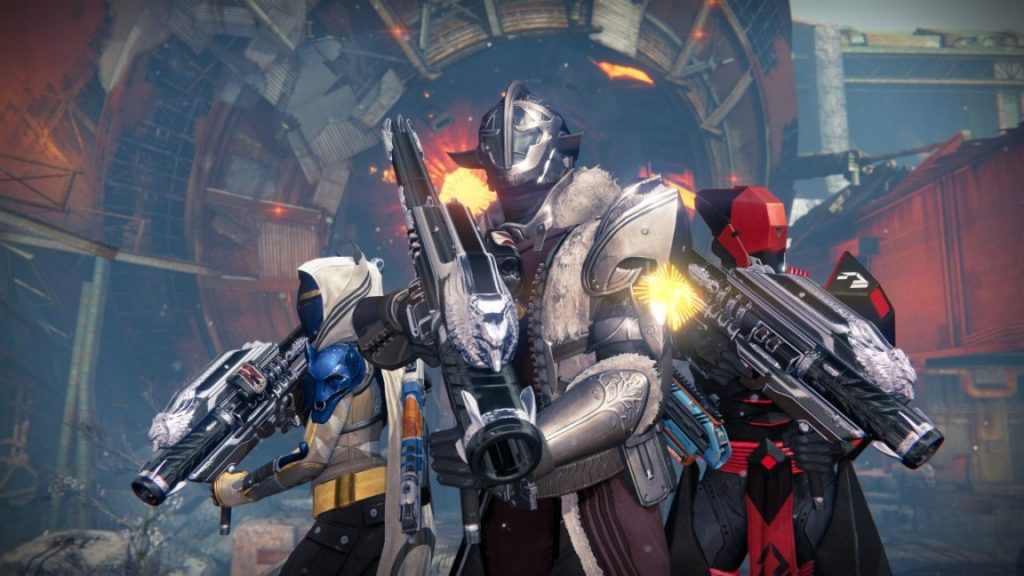
If the heavy emphasis on grinding your way through Strikes and the Daily and Weekly Bounties didn’t appeal to you before, there is little reason to come back for the newest expansion. Taking into consideration the new gear system added back during the April Update, making pieces drop only one or two Light Levels above your own, the game is actually even more grindy now than during The Taken King.
Instead, Rise of Iron is for the players that have stuck with Destiny from the beginning. For those players, there is plenty to love in Bungie’s latest. Bumping the Light Level cap to 385 (soon to be 400), adding a new Strike, reworking others, adding an entire new area to explore, adding to the Crucible, and of course offering up a new raid, there is a lot going on in Rise of Iron, even if it is ultimately less content than we saw in The Taken King.
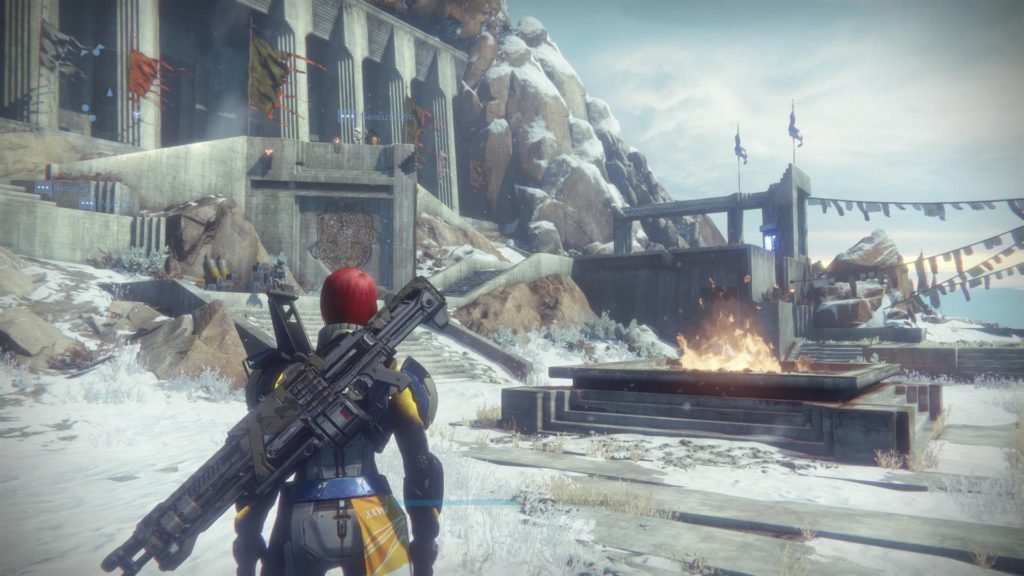
Making up for the short story, you are soon tasked with rebuilding the Gjallarhorn, among other exotic weapon quests, and taking on patrol missions in the new Plaguelands zone. The multiple missions involved in the Exotic quests are surprisingly well put together and arguably some of the best-written and enjoyable pieces of the expansion. And on top of everything, there is the new Record Book, giving you bonuses for completing five pages worth of extra, long-term goals in Rise of Iron.
Before getting to any of that however, one thing becomes immediately apparent from the start. Rise of Iron is some of the most visually interesting content Bungie has created for the game. Be it the snow-swept mountains, the still glowing ruins of hacked apart buildings, SIVA infested caverns, or the heat-tinted lava-flows deep inside the Plaguelands, each color palette is surprisingly vibrant.
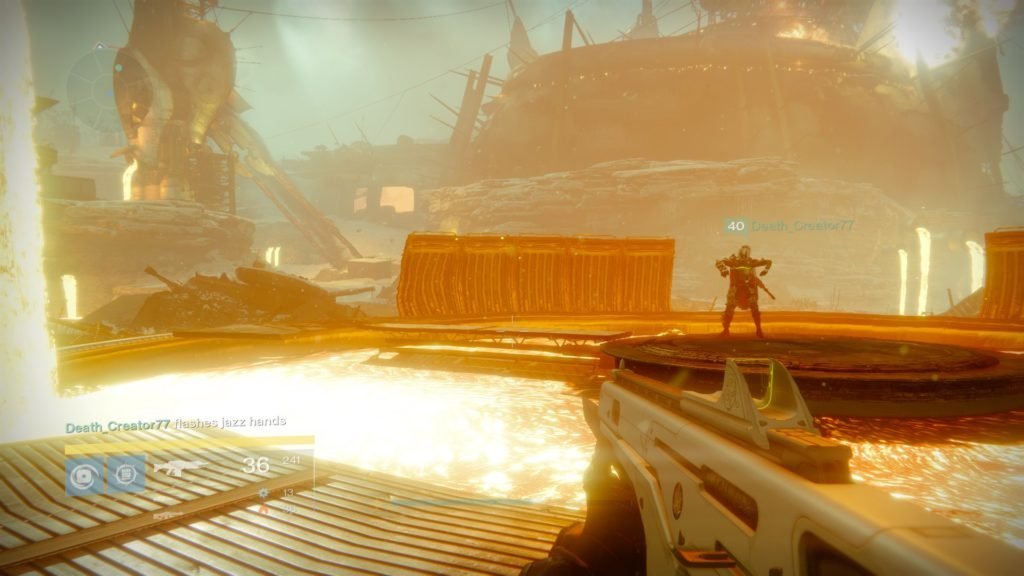
More than that, everything also feels denser, the environments themselves designed to be more complex. Running the range between the wide, open spaces players are long since used to and tight, claustrophobic surroundings, every area in the Plaguelands feels lived-in and delightfully uncomfortable, as any centuries-old quarantine zone should. Though there doesn’t seem to be as many hidden secrets as there were on the Dreadnaught, the new zone makes up for it by simply being a more stimulating environment all on its own.
When it comes to organized public events, the Plaguelands features the Archon Forge. A middle ground between the Dreadnaught’s Court of Oryx and the Prison of Elders, the Forge sees players use consumable items, called Offerings, to initiate waves of enemies and eventually spawn a boss. With multiple difficulty settings, different Offerings spawning different bosses, and new mechanics like the arena itself closing off as the waves start, it is a welcome evolution to the Court of Oryx idea.
The one issue is in the fact that the Forge is relatively hidden away. While the Court of Oryx is visible from multiple places in the Deadnaught, allowing you to see if a team is currently there, the Archon’s Forge is out of the way and inside a cave system. Unless you are specifically running through the Forge itself, there is no way to see if anyone else is already fighting. Add in the fact that you can only carry one Offering at a time, and the Forge comes together as a less seamless experience than the Court did.
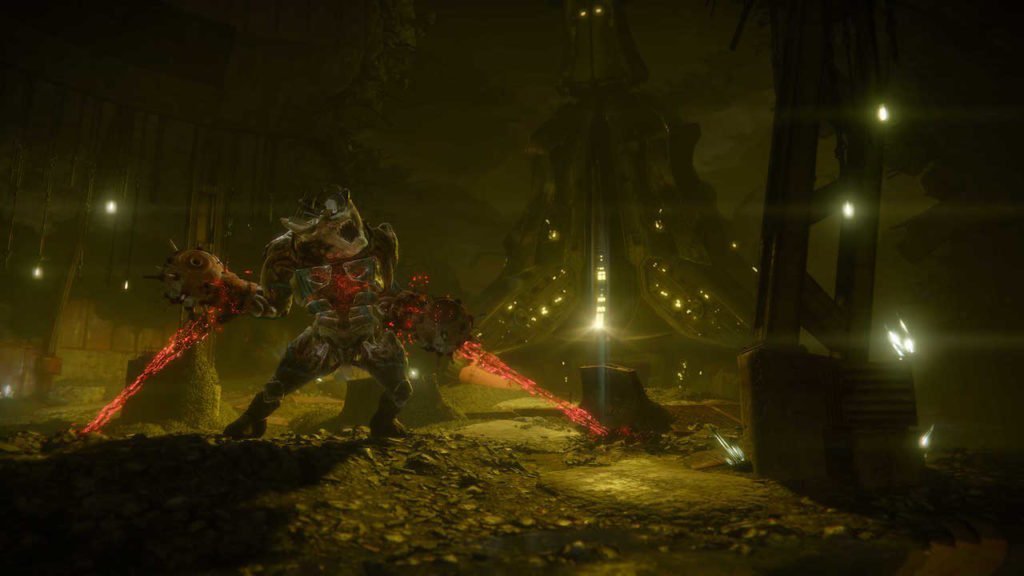
Instead, it’s the new Strikes that steal the show overall. Along with the new Strike set within the Plaguelands, The Wretched Eye, two Vanilla Strikes have received new SIVA versions. The first and second Strikes in the original game, The Devil’s Lair on Earth, and The Summoning Pits on the Moon, both feature reworked versions with new voice-over story, Splicer enemies, and beautifully redone boss fights. All three require a level of teamwork absent in most of Destiny’s prior 3-player activities.
Strikes have always seemed lacking when compared to the game’s widely well-regarded raid content. Rise of Iron does everything possible to fix this. The boss fights actually include some mechanics. In the reworked Devil’s Lair Strike, the most basic of the three, the boss will raise a shield. Players then have to kill a specific smaller enemy, pick up a dropped cannon, and shoot the shield to bring it down. Though admittedly simple, it’s enough to break up and add a bit of flair to the usual bullet-sponge style fights Destiny has been criticized for in the past. This, plus the addition of light platforming of all things, makes the new Strikes feel like a much more well-rounded experience than anything we’ve seen before.
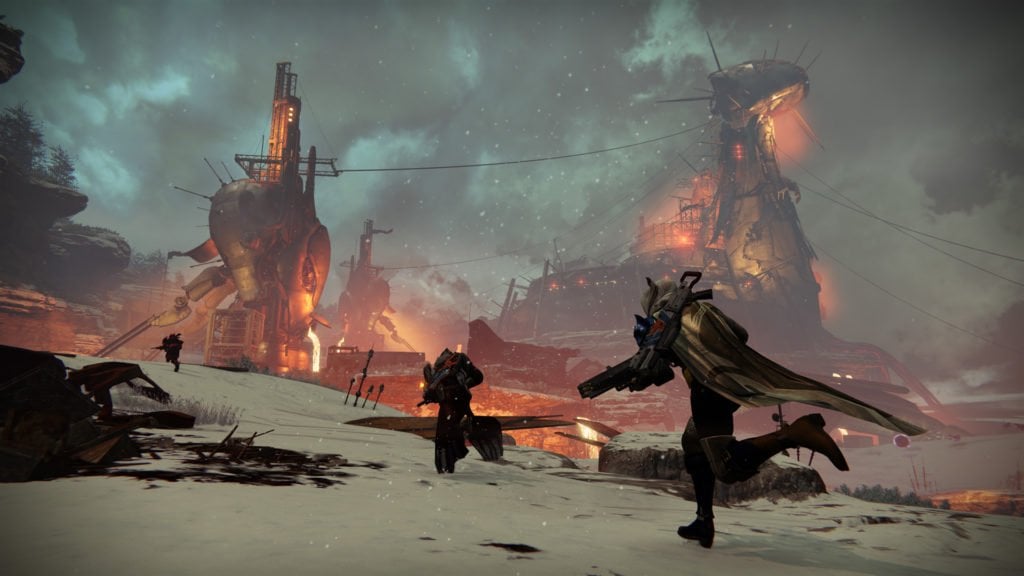
But the enhancements aren’t limited only to the new Strikes. Every Strike now features a reworked loot system. Along with the normal loot drops at the end of each, there is also a locked chest. Skeleton Keys, a consumable used to open these special chests, drop as separate rewards from doing the different Strike playlists. If you have a key, you can unlock the chest to receive specialty gear specific to that individual Strike. Aided by the now much more forgiving infusion system, this Strike-specific gear is just one more excellent carrot to keep Destiny’s loot-grind rolling.
For those more interested in PvP content however, Bungie has something special for you as well. Featuring three new maps (four on PS4), Rise of Iron continues the visual feast straight into the Crucible. Each of the new maps, especially the overgrown ruins of Floating Gardens, burst with color and personality.
Last Exit in particular, a dilapidated Venus subway station, stands out the most. Complete with dimly lit subway tunnels, collapsed buildings, shockingly tight corridors, and an open courtyard, it’s the most diverse of the new maps. Add in the ramps and elevation changes, and it lends itself to some truly bloody firefights.
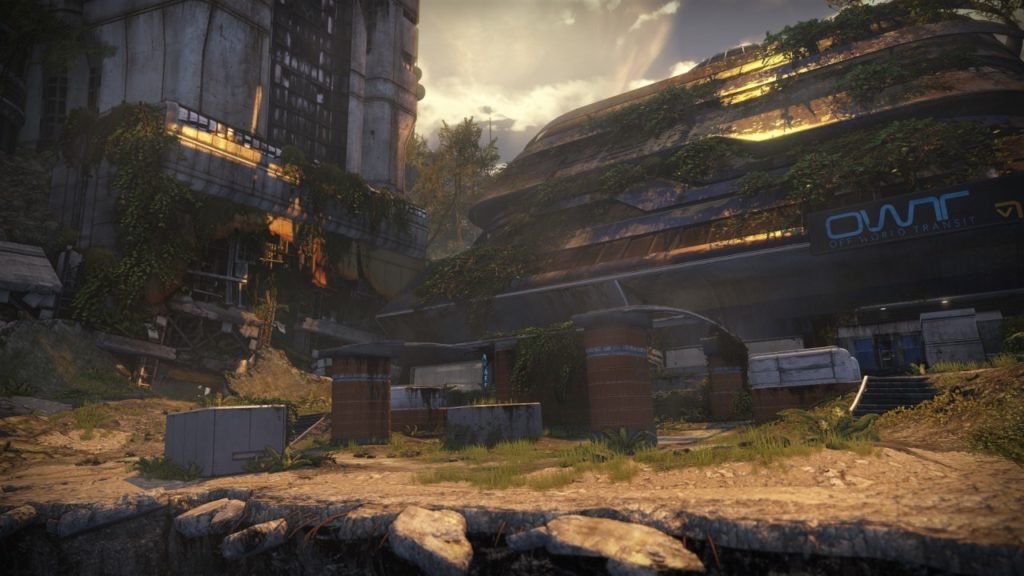
The far bigger change to Destiny’s PvP comes in the form of the new game mode, Supremacy. Much like Kill Confirmed from Call of Duty, Supremacy sees players drop a crest when they die. The only way to score points is to collect the other team’s dropped crests. You can also pick up your own team’s dropped crests to keep the other team from scoring points. The need to immediately be where an enemy dies almost entirely eliminates the cautious long-range play style many of Destiny’s other game modes lend themselves to.
Since kills alone don’t score points, Supremacy is more about having your team there to back you up. And simply put, it is some of the most hectic, intense fun I have ever had in Destiny’s Crucible. Prizing teamwork above all else, even in a 6v6 format, the mode consistently offers that edge-of-your-seat feeling usually reserved for the 3v3 Skirmishes.
Switch over to the free-for-all Rumble Supremacy however, and all that focus on teamwork goes out the window. Instead, the free-for-all version poses its own set of questions, often rewarding cautious play more than running and gunning. When two other guardians kill each other, the points are yours if you can swoop in and grab the crests. While it won’t appeal to most, the mode is different enough to offer a new challenge for those wishing to go it alone.
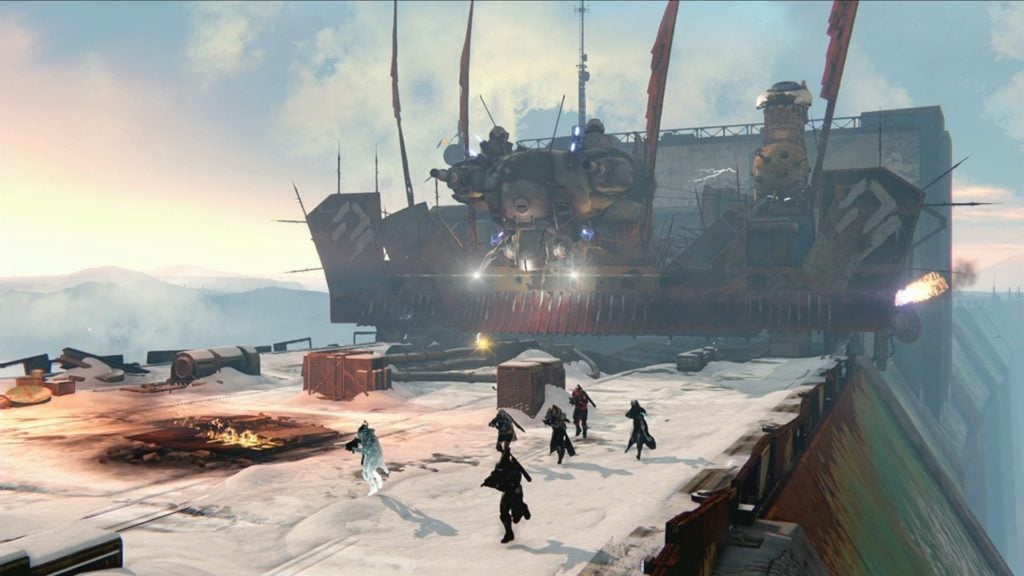
But of course, there is also the pride and joy of any Destiny content release, the raid. Wrath of the Machines sees a team of six fight their way into the wall, on top of the wall, and back down again, all hunting after the Fallen leaders that have started using SIVA. Overall, the Rise of Iron raid is a noticeable degree easier than those previous. Helping making up for the surprisingly long gear grind it takes to get to the recommended 370 Light Level, an entire team can have a fair shot in the first couple fights at levels well below that.
Despite being easier however, the fights are some of the most unique engagements Bungie has dreamed up. The much-touted ‘Death Zamboni’ fight on top of the wall for instance is a radically different fight than you might expect, with the focus almost exclusively on moving as a team and communication instead of shooting a boss. With each three main fights taking place in drastically varied settings, Wrath of the Machines shares the same visual range as the rest of the expansion.
As players find better gear, learn new strategies and become more comfortable with the fights, it is possible the lower difficulty will be a detriment. But that simply means it is up to Bungie to impress even more with the eventual Hard Mode and Challenges. As is, the Rise of Iron raid is already the most interesting and diverse raid content in game.
While it is a shame the campaign doesn’t offer a more in-depth look at the history of the Destiny universe, and is over just as it’s getting good, Rise of Iron is a strong expansion. The raid, as well as the additions to the Strikes and PvP, feels fresh and interesting. Rise of Iron is an expansion for the Destiny-faithful. Despite its faults, it showcases the growth the game has seen over the past two years, and, considering it will likely be the last before Destiny 2, it is a worthy send off for the title as a whole.

